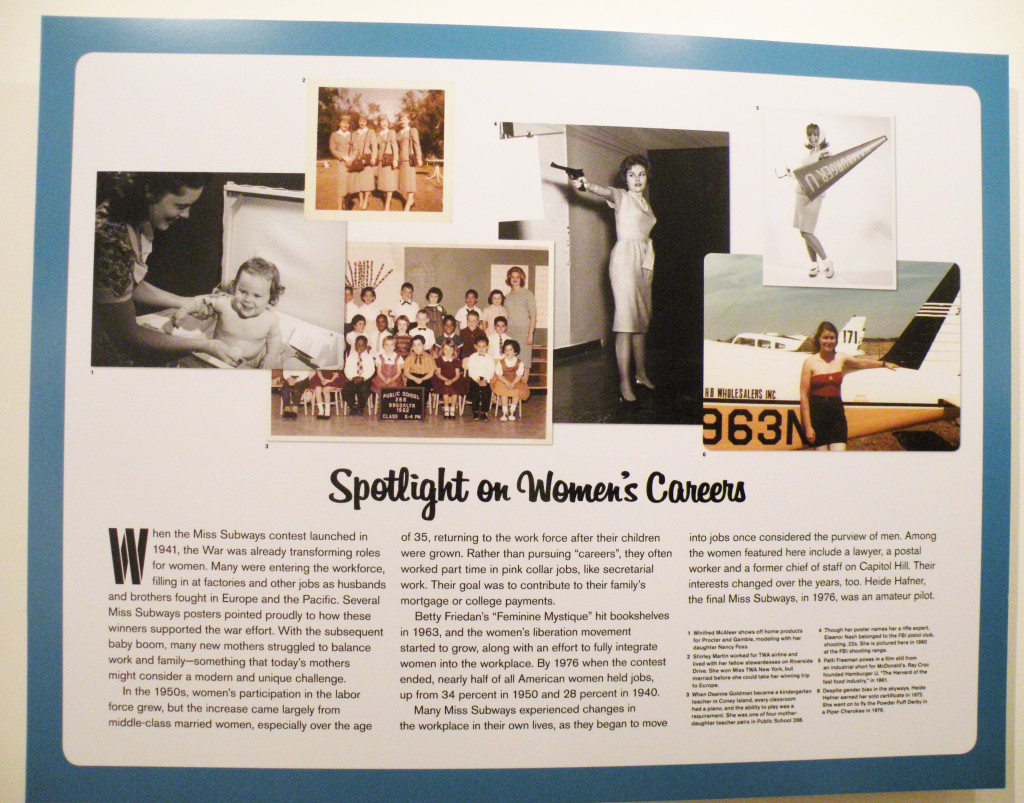When the Miss Subways contest launched in 1941, The War was already transforming roles for women.
Many were entering the workforce, filling in at factories and other jobs as husbands and brothers fought in Europe and in the Pacific. Several Miss Subways posters pointed proudly t how these winners supported the war effort. With the subsequent baby boom, many new mothers struggled to balance work and family–something that today’s mothers might consider a modern and unique challenge.
In the 1950s women’s participation in the labor force grew, but the increase came largely from the middle-class married women, especially over the age of 35, returning to the work force after their children were grown. Rather than pursuing “careers,” they often worked part time in pink collar jobs, like secretarial work. Their goal was to contribute to the family’s mortgage or college payemtns.
Betty Friedan’s “Feminine Mystique” hit bookshelves in 1963, and the women’s liberation movement started to grow, along with an effort to fully integrate women into the work place. By 1976 when the contest ended, nearly half of all American women held jobs, up from 34 percent in 1950 and 28 percent in 1940.
Many Miss Subways experienced changes in the work place in their own lives, as they began to move into jobs once considered the purview of men. Among the women featured here include a lawyer, a postal worker and a former chief of staff on Capitol Hill. Their interests changed over the years, too. Heide Hafner, the final Miss Subways, in 1976, was an amateur pilot.

